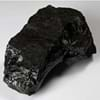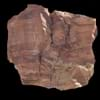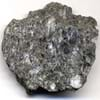Definition
Coal is a combustible black or brownish-black sedimentary rock usually occurring in rock strata in layers called coal beds
Diatomite is a fine-grained sedimentary rock which is formed from consolidated diatomaceous earth
Discoverer
John Peter Salley
Unknown
Etymology
From the Old English term col, which has meant mineral of fossilized carbon since the 13th century
From diatom + -ite1
Class
Sedimentary Rocks
Sedimentary Rocks
Sub-Class
Durable Rock, Soft Rock
Durable Rock, Soft Rock
Group
Not Applicable
Not Applicable
Other Categories
Coarse Grained Rock, Fine Grained Rock, Medium Grained Rock, Opaque Rock
Fine Grained Rock, Opaque Rock
Texture
Amorphous, Glassy
Clastic or Non-Clastic
Color
Black, Brown, Dark Brown, Grey, Light to Dark Grey
Grey, White, Yellow
Durability
Durable
Non-Durable
Appearance
Veined or Pebbled
Soft
Interior Uses
Not Yet Used
Decorative Aggregates, Homes, Interior Decoration
Exterior Uses
Not Yet Used
Garden Decoration, Paving Stone
Other Architectural Uses
Not Yet Used
Curbing
Construction Industry
Cement Manufacture, for Road Aggregate, Making natural cement, Steel Production
As Dimension Stone, Cement Manufacture, Construction Aggregate, for Road Aggregate, Landscaping, Making natural cement, Source of calcium
Medical Industry
Not Yet Used
Not Yet Used
Antiquity Uses
Artifacts
Artifacts
Commercial Uses
Alumina Refineries, Electricity Generation, Liquid Fuel, Manufacture of Soap, Solvents, Dyes, Plastics and Fibres, Paper Industry
Alumina Refineries, Animal feed filler, As a Feed Additive for Livestock, Creating Artwork, Drawing on blackboards, Fire resistant, Gymnasts, athletes and mountain climbers use for grip, In aquifers, Soil Conditioner, To ignite fire, Used as a filter medium, Used as an insecticide, Whiting material in toothpaste, paint and paper
Types
Peat, Lignite, Sub-Bituminous Coal, Bituminous Coal, Anthracite, Graphite
Not Available
Features
Helps in production of Heat and Electricity, Used as fossil fuel
Clasts are smooth to touch, Is one of the oldest rock, Smooth to touch, Very fine grained rock
Archaeological Significance
Monuments
Not Yet Used
Not Yet Used
Famous Monuments
Not Applicable
Not Applicable
Sculpture
Not Yet Used
Not Yet Used
Famous Sculptures
Not Applicable
Not Applicable
Pictographs
Not Used
Used
Petroglyphs
Not Used
Used
Figurines
Not Yet Used
Not Yet Used
Formation
Coal forms from the accumulation of plant debris in a swamp environment which is buried by sediments such as mud or sand and then compacted to form coal.
Diatomite rock formed from the skeletal remains of single celled plants called diatoms. When diatoms die, their skeletal remains sink to the bottom of lakes and oceans etc. hence forming diatomite deposit.
Mineral Content
Analcime, Apatite, Barite, Calcite, Chalcopyrite, Chlorite, Chromite, Clausthalite, Clay Minerals, Crandallite Group, Dolomite, Feldspar, Galena, Gypsum, Marcasite, Muscovite or Illite, Pyrite, Quartz, Siderite, Sphalerite, Zircon
Calcite, Clay, Clay Minerals, Quartz, Sand
Compound Content
Carbon, Hydrogen, Nitrogen, Oxygen, Sulphur
Ca, NaCl, CaO
Types of Metamorphism
Burial Metamorphism, Cataclastic Metamorphism, Regional Metamorphism
Not Applicable
Types of Weathering
Not Applicable
Biological Weathering, Chemical Weathering, Mechanical Weathering
Types of Erosion
Not Applicable
Chemical Erosion, Coastal Erosion, Wind Erosion
Grain Size
Medium to Fine Coarse Grained
Very fine-grained
Fracture
Conchoidal
Not Available
Porosity
Less Porous
Highly Porous
Luster
Dull to Vitreous to Submetallic
Dull
Cleavage
Non-Existent
Non-Existent
Toughness
Not Available
1
Specific Gravity
1.1-1.4
2.3-2.4
Transparency
Opaque
Opaque
Density
1100-1400 g/cm3
2.49-2.51 g/cm3
Resistance
Heat Resistant
Heat Resistant
Deposits in Eastern Continents
Asia
Bangladesh, Burma, Cambodia, China, India, Indonesia, Kazakhstan, Malaysia, Mongolia, Pakistan, Turkey, Vietnam
Brunei, India, Indonesia, Malaysia, Singapore, Thailand, Vietnam
Africa
Botswana, Kenya, Morocco, Mozambique, South Africa, Tanzania
Cameroon, Chad, Ghana, Kenya, Malawi, Sudan, Tanzania, Togo, Zambia, Zimbabwe
Europe
Belgium, Bulgaria, England, France, Germany, Greece, Hungary, Kosovo, Netherlands, Norway, Poland, Romania, Serbia, Slovakia, Slovenia, The Czech Republic, Ukraine, United Kingdom
England, France, Germany, Spain, United Kingdom
Others
Not Yet Found
Not Yet Found
Deposits in Western Continents
North America
Canada, Mexico, USA
Canada, USA
South America
Brazil, Chile, Colombia, Venezuela
Colombia
Deposits in Oceania Continent
Australia
New South Wales, Queensland, Victoria
Adelaide, New Zealand, Queensland, Tonga, Victoria, Yorke Peninsula
All about Coal and Diatomite Properties
Know all about Coal and Diatomite properties here. All properties of rocks are important as they define the type of rock and its application. Coal and Diatomite belong to Sedimentary Rocks.Texture of Coal is Amorphous, Glassy whereas that of Diatomite is Clastic or Non-Clastic. Coal appears Veined or Pebbled and Diatomite appears Soft. The luster of Coal is dull to vitreous to submetallic while that of Diatomite is dull. Coal is available in black, brown, dark brown, grey, light to dark grey colors whereas Diatomite is available in grey, white, yellow colors. The commercial uses of Coal are alumina refineries, electricity generation, liquid fuel, manufacture of soap, solvents, dyes, plastics and fibres, paper industry and that of Diatomite are alumina refineries, animal feed filler, as a feed additive for livestock, creating artwork, drawing on blackboards, fire resistant, gymnasts, athletes and mountain climbers use for grip, in aquifers, soil conditioner, to ignite fire, used as a filter medium, used as an insecticide, whiting material in toothpaste, paint and paper.









